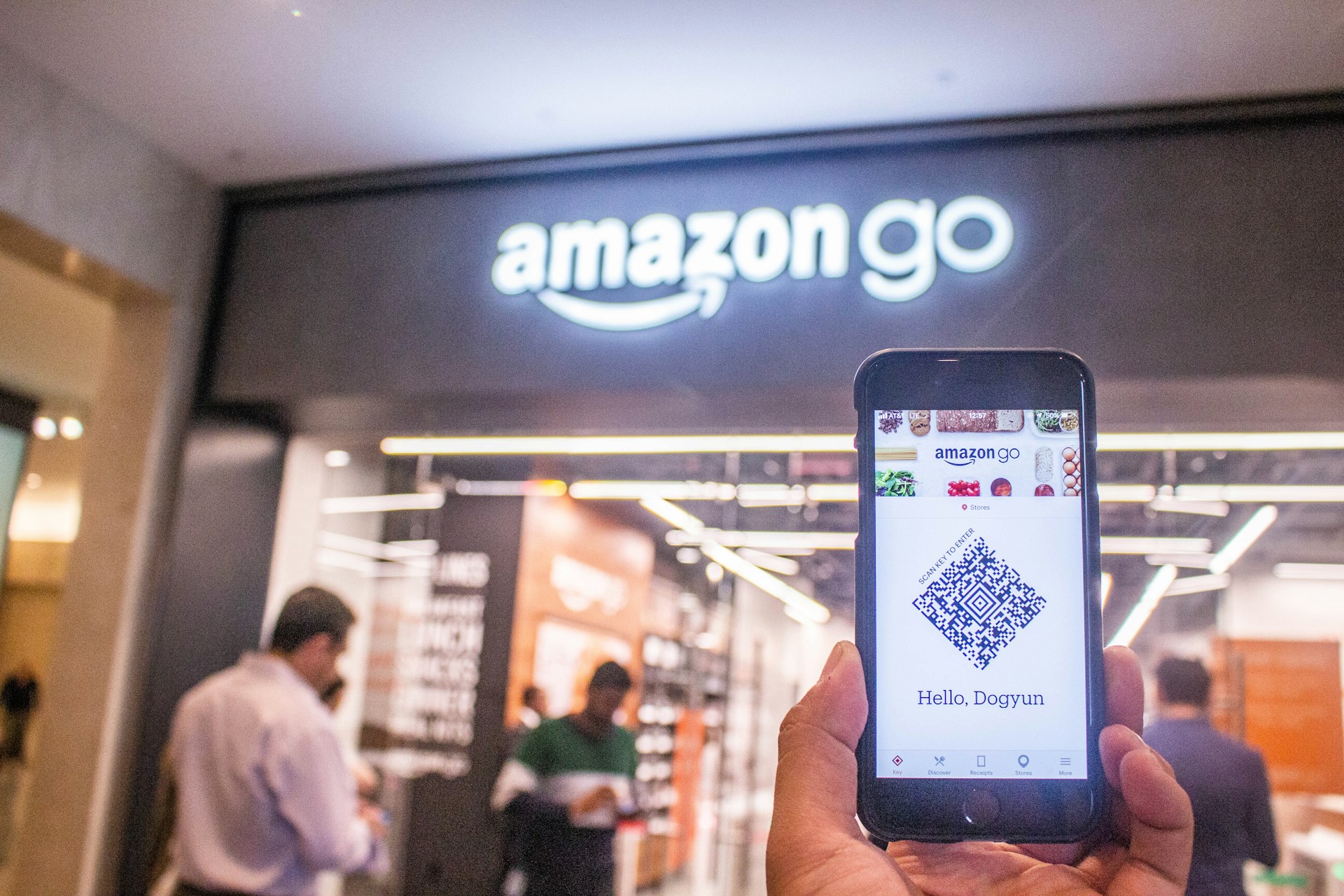
7 Most Powerful Applications for Driverless AI
August 17, 2023 - Lou Farrell
Revolutionized is reader-supported. When you buy through links on our site, we may earn an affiliate commission. Learn more here.
Driverless AI has the chance to innovate industries, infrastructure and the average person’s personal life. It’s consistently advancing, creating more real-world use cases. While it’s not mainstream yet, it has the opportunity to be revolutionary.
What is Driverless AI?
Driverless artificial intelligence (AI) automates various modes of transportation. Hardware like sensors and cameras allow it to “see” the road around it so it can make decisions in real-time for the driver. Most vehicles use machine learning to enhance performance. The goal is to increase people’s freedom and flexibility while driving.
How do regulatory agencies and organizations determine how advanced their AI is? Most follow the Society of Automotive Engineers’ definition of autonomy. It’s essentially the standard because it’s accurate and to the point.
Basically, it rates vehicles on a scale ranging from zero to five. While a zero means they only have basic supplementary features, a five signals they can drive under all conditions and are entirely autonomous.
While various industries have made technological strides in recent years, most of their work falls under the category of two or three. A vehicle would have to get a five for any credible institution to consider it truly driverless.
1. Health Care
Even though the health care industry doesn’t extensively use AI in transportation as of 2023, many organizations have looked into its capabilities. In 2020, some were even working with the National Highway Traffic Safety Administration (NHTSA) to overcome legal and technical obstacles to integration.
They aimed to waive restrictions on self-driving technology to allow ambulances to utilize driverless AI. The introduction of autonomous emergency vehicles could completely overhaul the sector for the benefit of health care practitioners and patients.
Imagine a world where self-driving vehicles could safely shuttle patients on the most efficient route to the hospital. Facilities could even equip them with Internet of Things (IoT) medical wearables to track people’s vital signs and understand their condition before they reach their destination. Ultimately, it could make health care much more accessible.
2. Agriculture
A cornfield may not be the first place someone’s mind goes to when they think of self-driving cars, but the technology has incredible potential in the agriculture industry. The infamous John Deere even announced a line of autonomous tractors in 2022. While they aren’t available to the public as of April 2023, it shows that the sector is making progress.
Farmers who have equipped their agricultural vehicles with driverless AI can use the same technology to manage their fields. For example, one company’s algorithm can recognize and track individual plants, resulting in a 95% reduction in chemical use in comparison to traditional machines.
On top of being able to drive itself around — saving the farmer a massive amount of time — it can even increase crop yields. The use cases for this technology extend beyond simply transporting someone from one place to another.
3. Commercial Shipping
Commercial shipping relies on people who are willing to drive incredibly long distances in short periods. It isn’t an ideal job for most, yet much of the country depends on them showing up to work. Historically, minor disruptions in the supply chain have caused massive butterfly effects.
Integrating driverless AI into an existing tractor-trailer is much less expensive than purchasing a new one, meaning it would be a cost-effective move. It could streamline the commercial shipping process. Also, using a high-level self-driving vehicle to support drivers would allow them to rest more, potentially reducing the number of fatal traffic accidents.
4. Personal Use
Many people are excited for the day when they can reach their destination without touching their steering wheel. Driverless AI for personal use revolves around a safe and streamlined mode of transportation. It could also translate into luxury experiences, considering automotive manufacturers would be able to replace the driver’s seat and maximize the interior for comfort.
Additionally, there are also many incredible accessibility benefits to this technology. In 2021, researchers at several educational institutions across the country looked into producing convenient prototypes to accommodate those with disabilities.
Many people with physical conditions can’t operate vehicles, so the innovation of an algorithm-driven version would be revolutionary for them. It would dramatically improve their access to the world and reduce their dependency on external support systems.
While the NHTSA notes that no self-driving cars for personal use technically exist yet, a total of 34 states either allow autonomous vehicles or are looking into enabling them as of January 2023. More have seemed open to the concept as research and technology have improved.
Technological advancements will be vital in improving how comfortable people are with it. With something like edge AI, vehicles could essentially communicate with nearby cars to significantly decrease latency and increase responsiveness. Since response times improve, this translates to fewer collisions and safer roadways.
5. Package Delivery
Delays in package delivery are often frustrating for the manufacturer and consumer. Even when everything functions as it should, it’s a complex and expensive process. Last-mile delivery alone accounts for over half of shipping costs on average.
Self-driving vehicles may be the solution to this issue. They could take the most efficient routes using real-time data they collect from traffic cameras, weather reports and congestion reports. It could be of great use since costs and delays often result from inefficiencies. Customers would also benefit from timely deliveries.
6. Public Transportation
Self-driving vehicles have a considerable potential to overhaul public transportation, considering most buses, trains and taxis follow similar preset routes. Cities could use it dramatically reduce their labor costs, allowing them to expand their service areas or reinvest in the community.
Phoenix, Arizona’s regional transport operator plans to spend $250,000 over the course of five years to establish the most efficient use of driverless AI in metropolitan areas. The goal is to research and test how it can overhaul or integrate with the current system.
Since the effort’s announcement is from May 2023, the outcome is a few years away. Still, it’s in motion — the city may soon have an entirely new public transportation infrastructure, as it aims to employ only level four or five vehicles. The move also signals a growing acceptance of the technology.
7. Mail Delivery
Delivering a package with a self-driving vehicle is possible, so why not include letters as well? While the current system is reasonably efficient, a modern overhaul is long overdue — the average person would benefit from its improvements.
Some have already pushed the limitations of the technology to see how feasible it is. For example, the United States Postal Service (USPS) tested out driverless AI during a two-week pilot program in 2019. It partnered with the company TuSimple to travel a long-haul route between Dallas, Texas and Phoenix, Arizona.
Usually, getting a human to work such a trip is challenging because it’s physically and mentally demanding — it’s not easy to meet delivery quotas while maintaining a high level of awareness on the road. While the test didn’t result in a fleet of self-driving mail delivery vehicles, it provided proof of concept.
The USPS wouldn’t need to overhaul its current mail distribution practices since it could simply direct the vehicle to a local facility before sending a human out for last-mile delivery. Technology can handle the majority of the monotonous work while people take care of more complex tasks like deciphering handwriting.
Leveraging Driverless Technology
Driverless AI can adapt in real-time to the world around it, making it useful in all sorts of applications. Commercial industries, cities and even the average person can potentially use it. While the technology still needs more time to develop, it looks incredibly promising so far.
Revolutionized is reader-supported. When you buy through links on our site, we may earn an affiliate commission. Learn more here.
Author
Lou Farrell
Lou Farrell, Senior Editor, is a science and technology writer at Revolutionized, specializing in technological advancements and the impacts on the environment from new developments in the industry. He loves almost nothing more than writing, and enthusiastically tackles each new challenge in this ever-changing world. If not writing, he enjoys unwinding with some casual gaming, or a good sci-fi or fantasy novel.







